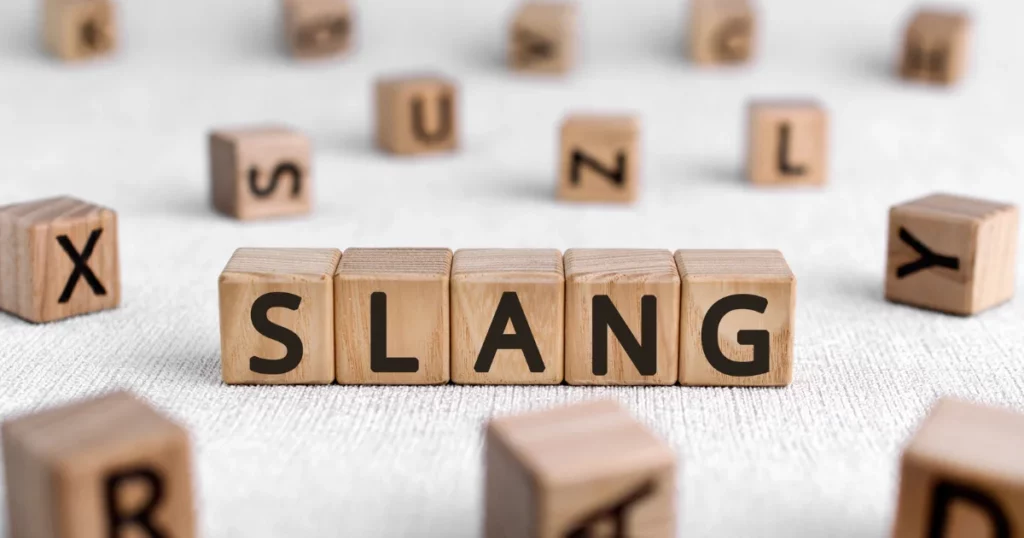Table of Contents
ToggleHello language enthusiasts!
In the dynamic world of English language learning, the incorporation of slang is often a topic of robust discussion. As an ESL teacher like Teacher Kayla, with a deep focus on fostering holistic language understanding, one must ask: when is it appropriate to use slang, and when should we refrain? Let’s dive into the fascinating world of modern English slang to better equip learners for real-life communication scenarios.
What is Slang?
To kick things off, let’s define what slang is. Essentially, it refers to informal language often used within particular groups, communities, or cultural settings. It’s a tool that can foster deeper connections and showcase one’s fluency in a language.
The Rich Tapestry of English Slang
The English language has a rich repository of slang, which varies immensely across different regions. Words and phrases that are considered slang in one region might not even be understood in another! It’s like a vibrant, ever-changing tapestry of expressions that add color and nuance to everyday conversations.
When to Use Slang
Let’s discuss the scenarios where using slang can be a good choice:
- Building Rapport: Using slang can aid in building rapport and establishing warm connections. It suggests a level of comfort and familiarity with the listener.
- Creative Expression: Slang allows for a more vibrant and colorful expression of thoughts, opening up a world of creativity in communication.
- Social Media and Content Creation: For content creators like Teacher Kayla, using slang can often make content more relatable and engaging, particularly for a younger audience.
When to Avoid Slang
Now, onto the situations where it might be better to avoid slang:
- Formal Settings: In formal situations such as academic writing or professional environments, it is usually best to stick to standard English to maintain a level of professionalism.
- Cross-Cultural Communication: When interacting with individuals from different cultural backgrounds, it is wise to avoid slang to prevent potential misunderstandings.
- Learning Phases: For intermediate to advanced learners who are still in the process of mastering English, it might be beneficial to first establish a solid foundation in standard English before delving into the world of slang.
Striking the Right Balance
As language educators and learners, it’s all about striking the right balance. Knowing when to use slang and when to stick to standard English can significantly enhance one’s language skills, offering a richer, more nuanced understanding of English.
Conclusion
To sum up, slang holds a notable place in modern English, serving as a bridge to deeper connections and a tool for vibrant self-expression. However, it comes with its own set of rules and contexts where it can be appropriately utilized. By understanding the dynamics of slang, learners can navigate the diverse landscapes of English with greater confidence and flair.
We hope that, with this guide, you feel more prepared to explore the lively world of English slang, whether it’s in your ESL classes or in the YouTube videos you’re crafting, Teacher Kayla. Remember, it’s not just about the words we use, but how we use them that crafts a rich, fulfilling linguistic experience. Happy learning!
Exercises
Objective: To understand what slang is.
- Write down your own definition of ‘slang’ based on what you understood from the blog post.
- Share your definition with a peer and discuss the similarities and differences in your definitions.
Objective: To explore the richness of English slang.
- List down five slang terms you know along with their meanings.
- Discuss with the class whether these slang terms are universally understood or specific to certain regions or communities.
Objective: To identify contexts where slang is appropriate.
- Describe a scenario where using slang would be beneficial in building rapport and fostering deeper connections.
- Share your scenario with the class and discuss why using slang would be appropriate in that context.
Objective: To understand how slang can aid in creative expression.
- Write a short paragraph on any topic, first using standard English and then rewriting it using slang to express the same ideas more vibrantly.
- Share your paragraphs with the class and discuss the different impacts of the two versions.
Objective: To learn to use slang in content creation.
- As a content creator, draft a short script for a social media post or video using slang appropriately.
- Share your script with a peer and receive feedback on the usage of slang.
Objective: To identify situations where avoiding slang is better.
- List down three formal settings where using slang would not be appropriate.
- Discuss with a peer why avoiding slang in these settings is beneficial.
Objective: To understand the role of slang in cross-cultural communication.
- Describe a scenario involving cross-cultural communication where using slang might lead to misunderstandings.
- Share your scenario with the class and discuss ways to avoid potential misunderstandings in such situations.
Objective: To identify the right time for learners to start using slang.
- Write a short reflection on how learning slang at different phases of language learning can impact one’s understanding of English.
- Share your reflection with a peer and discuss the pros and cons of learning slang at different stages.
Objective: To learn to balance the use of slang and standard English.
- Create a dialogue between two people, showing how to strike a balance between using slang and standard English appropriately.
- Perform the dialogue in front of the class and discuss the effectiveness of striking the right balance in the conversation.
Objective: To reflect on the role of slang in modern English.
- Write a short reflection on what you learned from the blog post about the role of slang in modern English.
- Share your reflection with the class and discuss the key takeaways from the blog post.
Unlocking The Transition Secrets with Teacher Kayla
Ready to delve deeper? Look no further! Join Teacher Kayla’s group classes where we unravel the deeper secrets to mastering smooth transitions in English speaking.
Our group classes are designed for intermediate to advanced learners, offering an inclusive and friendly learning environment where every individual’s learning pace is respected and nurtured.
Contact Me for Group Classes.
College Course Assistance Program
Embarking on a college journey and need a guiding hand to understand the course materials better? Teacher Kayla is here to help with the College Course Assistance Program.
This program is crafted meticulously to offer personalized guidance, support, and clarity when it comes to understanding your course materials. We are committed to helping you overcome the hurdles in your learning path and succeed in your academic journey.

